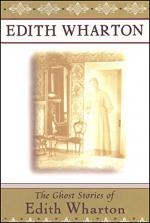|
This section contains 1,096 words (approx. 3 pages at 400 words per page) |

|
Point of View
"Afterward" is written from the third person point of view, with a limited perspective into Mary Boyne's thoughts. While Ned Boyne often seems to express desire or worry in his facial expressions, it is only through the perspective of his wife that readers are keyed into his emotions. Mary's thoughts dominate the story, and Wharton often dedicates entire paragraphs to her musings and questions over her husband's behavior. In this way, Wharton adopts the popular writing style at the time – popularized by writers like Jane Austen – in which the third person perspective is used in tandem with first-person voice in order to evaluate, assess, and scrutinize social interactions more thoroughly. The narrator often takes on the voice of Mary herself, a literary technique known as free indirect discourse. An example of free indirect discourse occurs when Ned dismisses Mary's questions about the man they both...
|
This section contains 1,096 words (approx. 3 pages at 400 words per page) |

|




